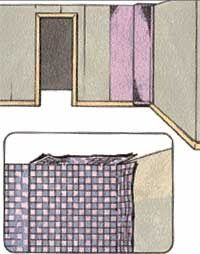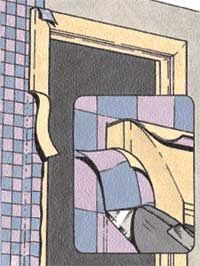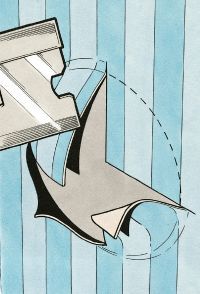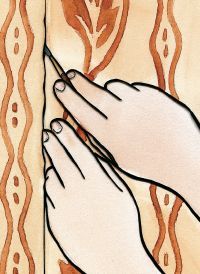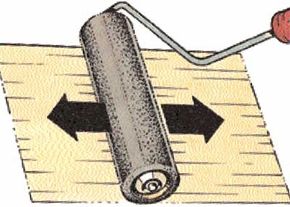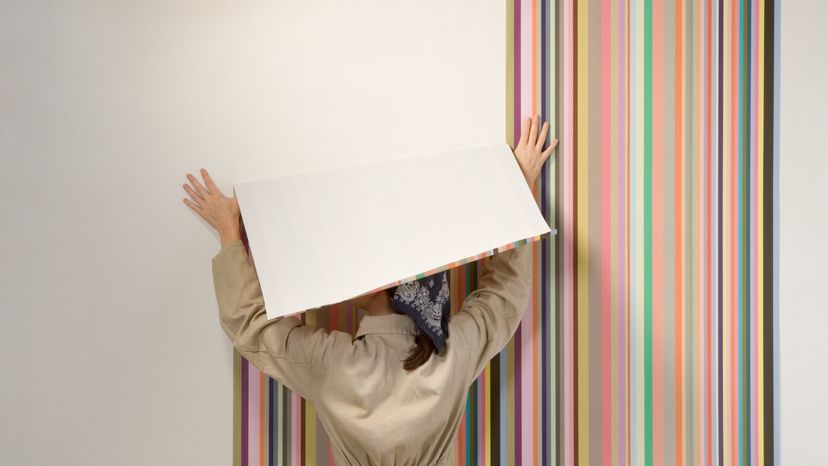
With the wide assortment of wall coverings available today, choosing among them can be a challenge equal to putting them up. Fortunately for you, we have the answers to all of your wallpapering questions. From removing to hanging to cleaning and repairing, this article will fill you in on all aspects of wallpapering your home. Now all you have to worry about is which pattern to choose.
Before we get into the specifics of hanging wallpaper, we will tell you how to remove your old wall covering that might need to be replaced.
Advertisement
Removing Wallpaper
Stripping off the old wall covering is usually wiser than leaving it on. New coverings adhere better to stripped-down surfaces. Depending on the wall covering and the kind of wall it's on, there are several ways to approach the job.
You can successfully paper over old wall coverings, but it's not always a good idea because the moisture in adhesives can cause both the old and new coverings to peel away from the wall. Also, if previous strips of wall covering have been lapped at the seams, these lap marks will show through the new covering. If you still want to paper over old coverings, as necessary, sand the seams smooth, tear away any loose strips, and re-paste loose edges around butt seams or defects before applying the new covering. If you're papering over foil or vinyl wall coverings, go over the shiny areas lightly with coarse sandpaper and then vacuum or wipe the sanding dust off the wall.
Now, if you've decided to strip off the old stuff, here are detailed instructions.
Strippable Papers
Though most strippable wall coverings are characterized by smooth, plasticlike textures (including vinyl, fabric-backed vinyl, or fabric-backed paper), the only way to find out if a covering is really strippable is to try peeling it off the wall. Here's how:
Step 1: Pry the paper up in an inconspicuous corner at the top of a wall with the tip of a utility knife.
Step 2: Grasp the tip of the corner and, keeping it as close to the wall as possible, try to pull it down the surface of the wall. Pulling it toward you and away from the wall increases the likelihood of tearing it. If a covering is strippable, it should peel away from the wall when you apply steady, moderate pressure. If not, you're probably dealing with a nonstrippable paper that you will have to soak, steam, or dry-strip off the wall. Do not soak or use steam-stripping methods on drywall, though. The moisture can soften the wall's kraft-paper surface and its gypsum core. Instead, use a dry-strip method.
Slitting and Soaking
With this technique, you make horizontal slits in the surface of the old wall covering with a utility knife, a razor blade, or a special tool called a paper stripper, available at wall covering stores. The slits, made eight or ten inches apart, allow warm, soapy water or a liquid paper remover to get behind the paper and soften the adhesive so you can pull or scrape the paper off plaster walls. You can apply either solution with a sponge or a spray bottle. Caution: If you spray on a liquid paper remover, use a painters' mask to keep from inhaling chemical vapors.
Step 1: Apply the water or the paper remover and let it soak in for a few minutes.
Step 2: Do the same thing on the next strip, then go back to the first and wet it again top to bottom.
Step 3: Use a 3 1/2-inch-wide wall scraper with a flexible blade to begin stripping. Slide the blade under the top edge of one of the horizontal slits and, holding it at about a 30-degree angle, push up on the wet paper. A scraper-width section should rip along the sides of the blade and wrinkle up above it as you push.
Step 4: Continue pushing as long as the paper comes off. If the strip of scraped paper breaks, resoak that area and start scraping at another slit. If, after repeated soaking and scraping attempts, the adhesive is clearly not yielding, you'll have to use another method.
On walls made of drywall, use a paper stripper to make the horizontal slits as before, but don't wet the paper. Just slowly scrape or peel it away from the wall.
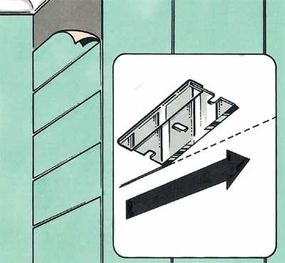
Many tool rental and wallpaper outlets rent electrical steamers to do-it-yourselfers. These appliances typically consist of an electrically heated water tank connected by a long hose to a steamer plate with a perforated face. Here's how they're used:
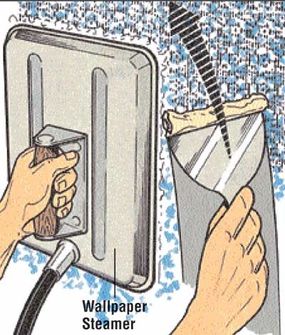
Step 1: Once the water is hot, hold the plate against the wall until you see the wall covering darken with moisture around the edges of the plate. Start on a single strip and work from the top down.
Step 2: After about half of the strip has been steamed, lift a top corner with a fingernail or a utility knife and attempt to peel the paper downward. If that doesn't work, resort to a wall scraper. You may have to steam the same areas two or three times to loosen older adhesive behind the paper.
Now your walls should be completely bare. Don't they look naked? Well, move on to the next section, and we will get you started hanging up some new wallpaper.
Advertisement
